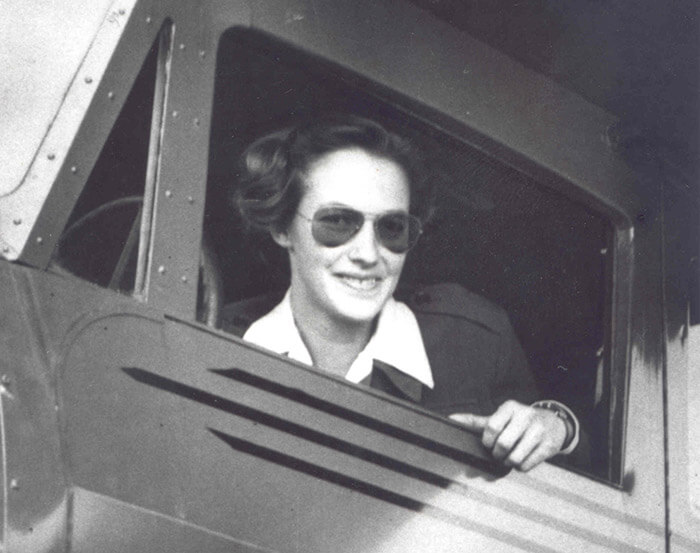Elizabeth Everts “Betty” Greene was born in Seattle in 1920. Betty and her twin brother, Bill, were the youngest of four children of Gertrude and Albert Greene. Her parents were strong and active Christians who worshiped at a Presbyterian church and started a Sunday School in their neighborhood. They nurtured this faith in their children, and Betty’s two older brothers went into Christian work.
Betty developed an early love of aviation and, like many young people of the day, was fascinated by the adventures of Charles Lindbergh, Admiral Byrd, and Amelia Earhart. As a teenager, she took flying lessons and even flew a solo flight. Betty longed for travel and adventure, and when a trusted older friend suggested that she use her flying for Christian mission work, Betty “leaped for joy at the thrilling thought of combining flying with [her] love for God.”1
Betty Greene began her professional aviation career by serving with the Women Airforce Service Pilots (WASPs) during World War II. She flew several kinds of military planes during the war and did experimental work on high-altitude flights. After the war, Betty helped found the Christian Airmen’s Missionary Fellowship, later called Mission Aviation Fellowship (MAF).



On February 23, 1946, Betty embarked on the first MAF flight, taking off from Los Angeles, California, with Mexico City as the final destination. Flying a red 1933 four-place-cabin Waco biplane, Betty began the flight with two passengers, Wycliffe workers Ethel Lambotte and Lois Schneider. Ethel worked in Wycliffe’s office in southern California while Lois was rejoining her husband Bob, who was a linguist, on the field.
The initial flight took much longer than expected after Betty grew disturbed by something coming off the engine. She decided to land in Tuxpan, Mexico and have the plane examined. Ethel and Lois went ahead to Mexico City on a commercial flight the next day. Betty later discovered the debris coming off the engine was nothing more than flaking paint.
The next morning, Betty took off from Tuxpan and headed to Mexico City where she connected with Wycliffe Bible Translators founder Cameron Townsend. He asked Betty if she could take him to their Jungle Camp near Tuxtla Gutierrez, a city located south of Mexico City. And away they went.
On Betty’s first attempt to reach Tuxtla after refueling in the village of Minatitlan, she turned back when a heavy storm rolled in. However, during the return to Minatitlan, the Waco’s engine died. Betty decided to switch gas tanks and quickly attempted to re-fire the engine. It worked and they safely returned to Minatitlan. She later discovered that water in the fuel drum from which she filled the left tank caused the engine to shut down.
The next morning, Betty flew Cameron to Tuxtla on a short flight, reaching her destination one week after taking off from Los Angeles on the first MAF mission flight.
Betty served as an MAF pilot for 16 years, flying in 12 countries and touching down in some 20 more. In 1962 she began working at MAF headquarters, and later served as an MAF advocate until her death in 1997.
[1] From Flying High by Betty Greene with Dietrich Buss.
Sign up to hear incredible stories from around the world and find out how you can make a difference.